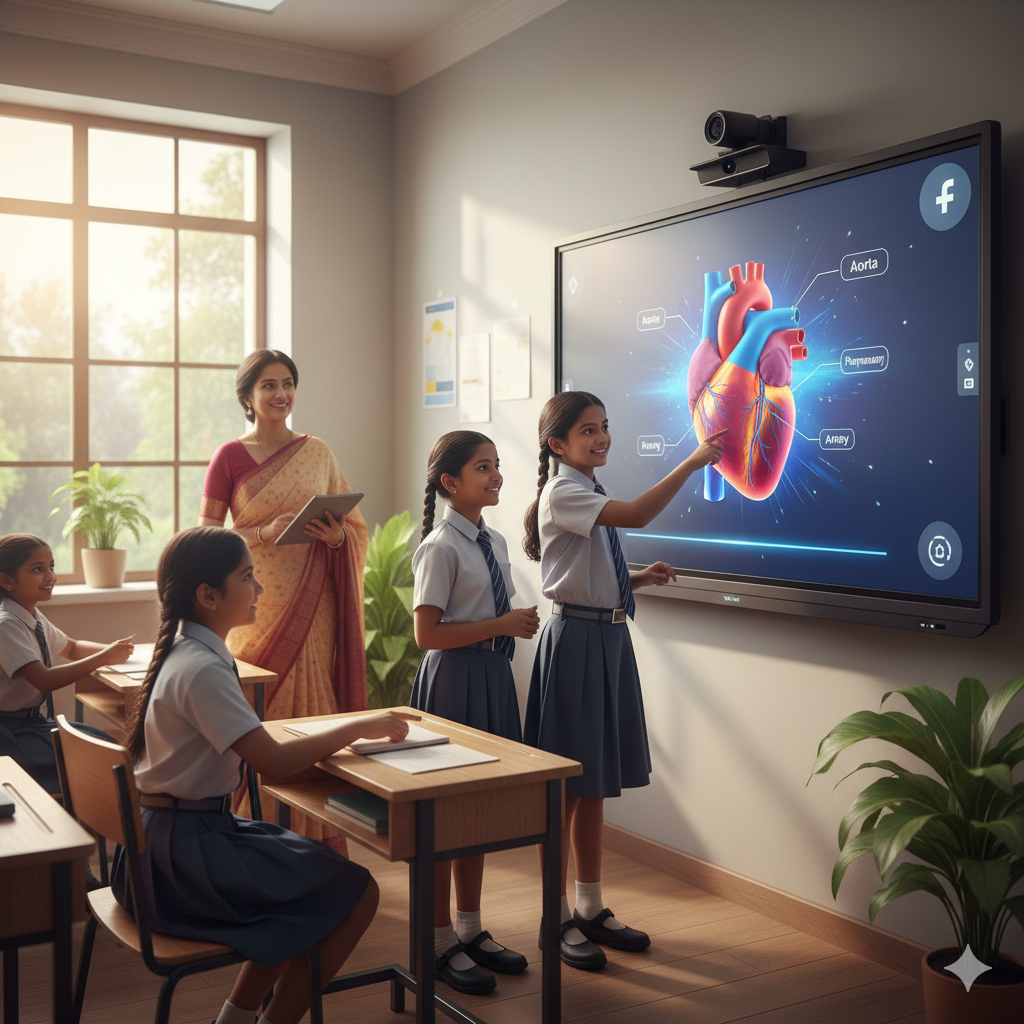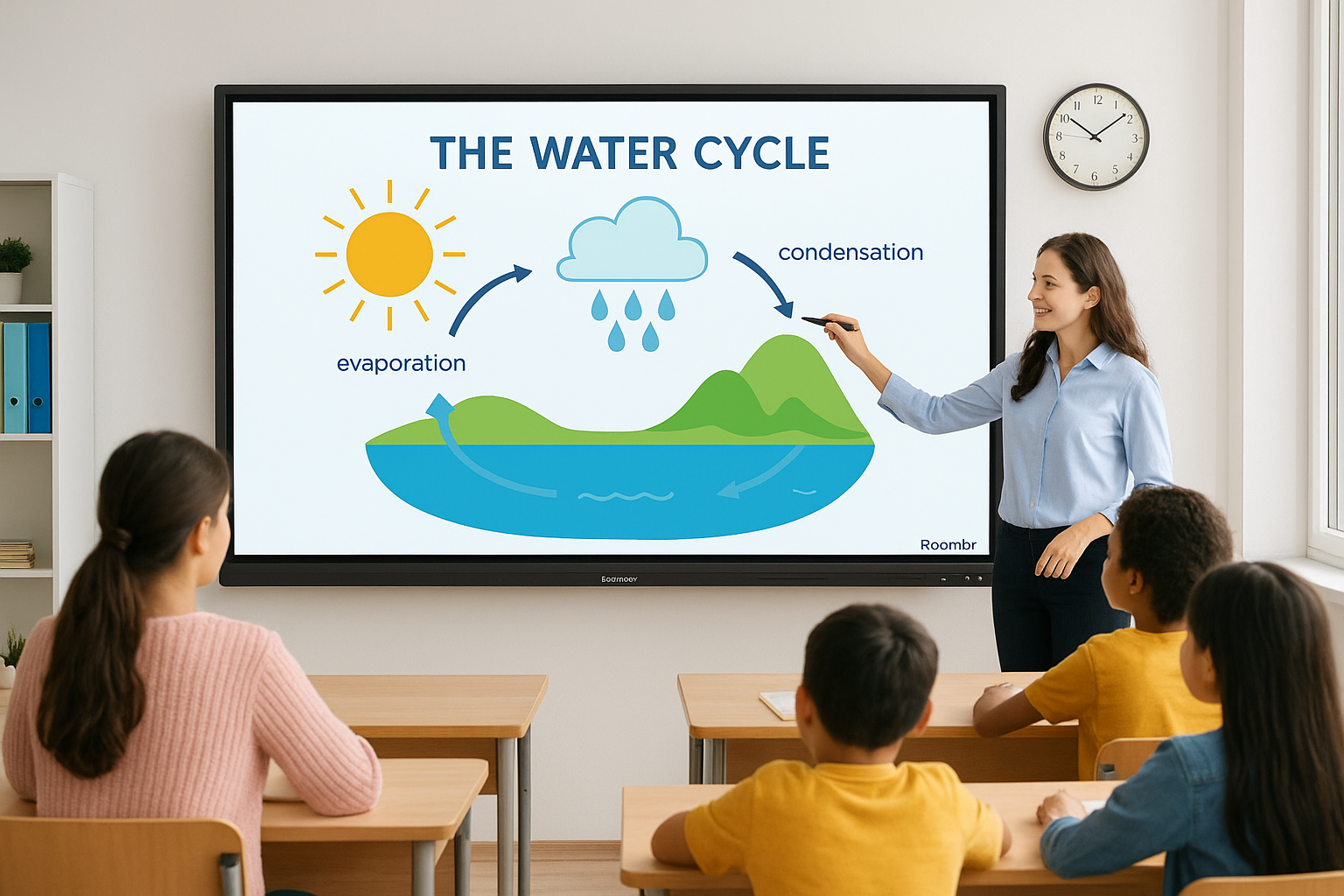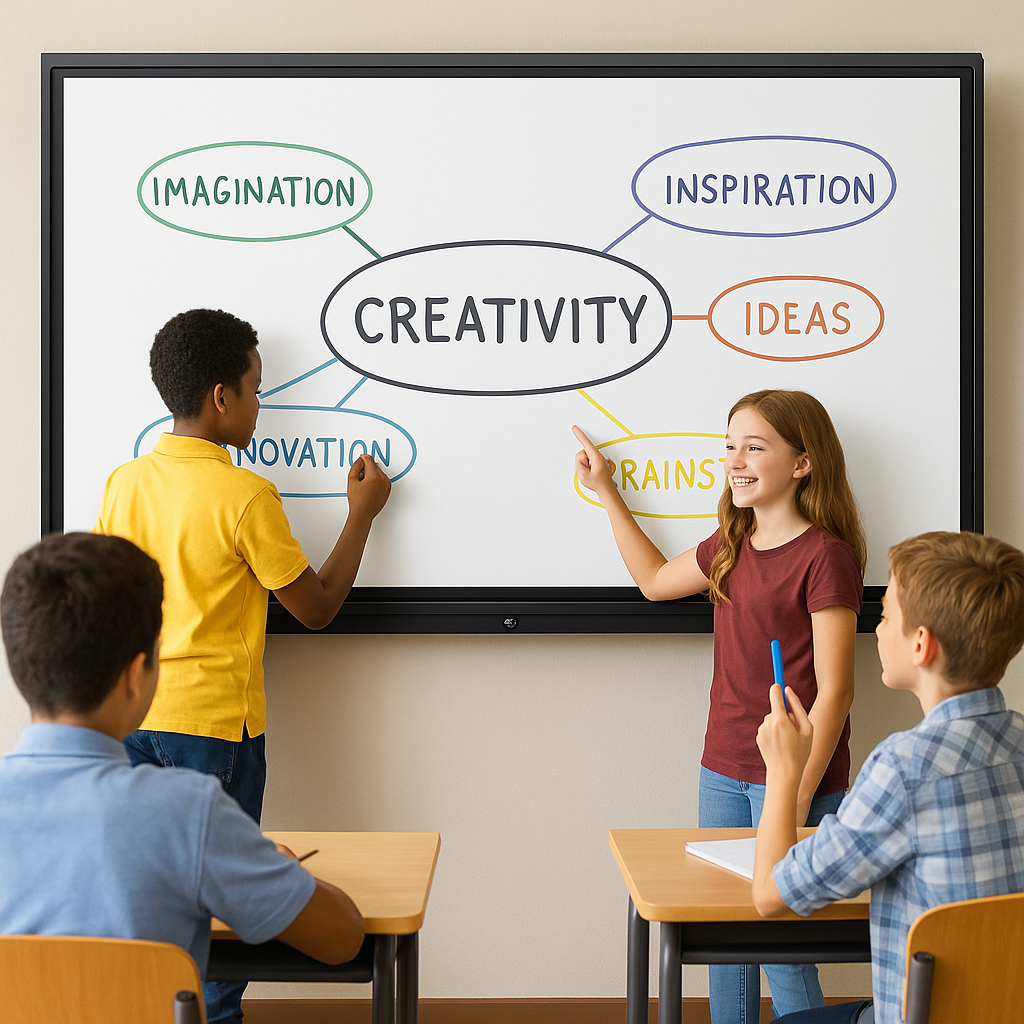AI-Powered Personalization: How a Smart Classroom Solution Adapts to Every Student

Imagine a typical classroom. In the front row, Student B finishes their math problems in five minutes and is waiting patiently. In the middle, Student A is completely lost, re-reading the same paragraph of the digital textbook, while Student C has just realized they understand the entire concept better when it’s presented as a video. This is the scenario of almost every classroom.
The reality is that every student learns differently, at their own unique pace and through their preferred channel. Yet, for decades, the standard approach has been the "one-size-fits-all" lecture.
This is where the power of a smart classroom solution and AI in education steps in. When a connected digital classroom infrastructure powers a classroom, the magic isn't just in the interactive displays, it’s in the artificial intelligence that learns from every interaction. This AI understands that Students A, B, and C are unique learners, and it quietly gets to work, adapting the curriculum to suit each one.
Unlike generic automation, AI personalization is about learning how your students learn.
What Personalization Means Inside a Smart Classroom
The term "personalization" in educational technology has a very specific meaning. It doesn't mean the teacher designs 30 separate lesson plans. It means the smart classroom solution extends the teacher's reach by acting as a highly efficient, real-time virtual assistant for every single student.
How does it work?
A smart classroom is fundamentally a sophisticated environment that collects and interprets student data in real time. Every click, every quiz response, every second spent watching a recorded lesson is a piece of data.
The AI engine then uses this data to answer a crucial question: What is the perfect next step for this individual student to achieve mastery?
Personalization, therefore, is the direct link between the smart classroom solution (the data collector), the AI engine (the decision-maker), and the adaptive content delivery (the action). It’s about dynamically adjusting three core elements:
- Content: Choosing the format (video, text, simulation) that works best.
- Pace: Speeding up or slowing down the lesson flow.
- Difficulty: Increasing or reducing the complexity of the tasks.
Why Personalization Matters More Than Ever
For decades, teaching operated on a single, hopeful assumption: if we delivered the same lesson at the same pace to everyone, most students would keep up. The tool was the same: a uniform lecture.
But modern data tells a different story. Students absorb knowledge at vastly varying speeds and through different senses. Forcing everyone into a single path inevitably leads to a few students being bored and many more being frustrated and left behind. Progress stalls.
AI helps solve this problem by offering personalized learning—an approach where the system dynamically adjusts lessons to individual needs rather than forcing everyone down one fixed path.
In a digital classroom, personalization isn't about isolating students. It's about empowering them. The system quietly works in the background, making sure every learner can push ahead confidently, at their optimal speed, and with the materials that finally click for them. The goal: move beyond the assembly line model to a universally tailored experience.
The Personalization Loop: How AI Learns, Adapts, and Responds

To truly personalize learning, the AI runs on a continuous cycle which includes a feedback loop that ensures the system is always improving its understanding of the student. Think of it as a constant digital conversation:
1. Observe: AI Monitors Engagement
As students work on their tablets or interactive notebooks within the digital classroom, the AI monitors everything the eye can’t see:
- Time-on-Task: How long did the student spend on each question? (High time-on-task with a wrong answer indicates confusion; low time-on-task with a wrong answer indicates rushing).
- Attempt History: Did they need multiple tries? Did they use the hint feature?
- Navigation Path: Did they skip the assigned reading and go straight to the summary video?
2. Analyze: Identify Patterns and Preferences
The AI processes the collected data to build a unique profile for each student. It flags:
- Specific Struggle Points: The system identifies that a student is consistently missing questions related to geometric area but excels in algebraic equations.
- Content Preference: It learns that a student’s quiz accuracy is statistically higher when they study using a 3D simulation versus a traditional PDF.
- Predictive Indicators: It notes that students who score below 60% on the first two formative assessments have a 75% chance of failing the unit test.
3. Adapt: Adjust Lesson Difficulty, Format, or Pace
This is where the magic of the smart classroom solution happens. Based on the analysis, the AI automatically triggers a response tailored to the individual:
- For the struggling student: The AI immediately switches their next assignment to a simpler, scaffolded exercise focused only on geometric area.
- For the excelling student: The AI unlocks an "Extension Challenge" module that delves into the history or advanced applications of the topic.
4. Refine: Learn Continuously
The system records the outcome of its adaptation. Did the simpler exercise work? If so, it confirms its diagnostic model. If not, it tries another method, getting smarter with every interaction.
Adapting to Every Learning Style
A teacher knows their students learn differently. What’s revolutionary is how easily the smart classroom solution's AI engine responds to these differences without the teacher having to manually prepare multiple versions of the same material.
- For Visual Learners: The platform suggests engaging content like interactive diagrams, 3D models, and digital annotations to their personal screens.
- For Auditory Learners: The same core topic might be delivered instead with voice-based summaries or short educational podcasts.
- Pacing Intelligence: This is the game-changer. Students who demonstrate mastery are immediately given a "Fast Track" challenge or the next unit. Students needing repetition are immediately provided with small, targeted exercises. The AI acts as a dynamic gatekeeper, ensuring no time is wasted, either through boredom or confusion.
Real-Time Feedback That Actually Helps
Traditional feedback often suffers from the "too late" syndrome. By the time a teacher grades and returns a quiz, the student has mentally moved on, and the memory of the mistake has faded. The learning opportunity is lost.
AI flips this dynamic entirely.
In a smart classroom, the system analyzes a response the second it’s submitted. This triggers instant, actionable feedback. Instead of just saying "Incorrect," the AI is precise:
- Pinpoints the Flaw: It highlights the specific line of logic or the formula application where the student broke down.
- Suggests a Refresher: It immediately links to a 90-second video on the exact sub-topic needed for review.
- Guides with Hints: It offers a critical hint or a key definition, allowing the student to attempt the question again with newfound guidance.
This real-time guidance is critical because it keeps the momentum and confidence high. Learners don't feel lost or left behind. They feel supported and capable of fixing the error right away. The teacher benefits because the system prevents a small misunderstanding from hardening into a major learning gap.
How AI Helps Teachers Focus on What Matters
It’s easy to focus on the student, but it’s impossible to ignore the enormous professional relief AI provides to the educator. AI in education takes on the heavy lifting, tracking, logging scores, and generating insights, so teachers can dedicate their energy to the elements only a human can provide: connection, creativity, and mentoring.
The teacher's dashboard, fed by the smart classroom solution, no longer presents a long spreadsheet of grades. Instead, it offers clear, prioritized alerts:
- High-Risk Students: The system flags the few students who have an 80% chance of failing the unit and explains why (e.g., "Student X has failed the fractions component necessary for this physics unit").
- Content Bottlenecks: The AI quickly identifies which specific concept caused 65% of the class to slow down, telling the teacher exactly where to focus their review time the next day.
The teacher becomes a master strategist and interventionist. They use the AI's data to plan targeted group sessions, providing compassion and context that no algorithm can manage. The technology handles the routine; the teacher brings empathy and vision. Together, they create a complete, dynamic learning experience.
Why AI Personalization is Transforming Education
The shift toward individualized learning, powered by the smart classroom solution, isn't just a global trend; it’s a necessity for future-proofing education:
- Scalable Quality: Personalization, once the luxury of private, one-on-one tutoring, is now made universally accessible. The AI delivers this gold standard of individualized attention to every child, regardless of class size.
- Deep Learning Guaranteed: The system’s constant reinforcement and immediate intervention ensure students achieve genuine mastery rather than just temporary memorization for a test.
- Future-Ready Classrooms: By engaging students with adaptive puzzles, simulations, and real-time digital tools, the digital classroom naturally builds the complex analytical skills needed for the modern workforce.
Schools and colleges using these sophisticated adaptive tools consistently report significantly higher student retention and proficiency rates, proving that this technology is delivering measurable results.
The Next Thing in Personalized Smart Classrooms
The future of the smart classroom solution will be even smarter and more intuitive. We are moving toward systems that:
- Predictive Coaching: Not only flags struggling students but automatically provides teachers with suggested lesson modifications, peer-to-peer collaboration setups, and parental communication scripts.
- Unified Ecosystems: All hardware, software, and assessment tools will function as a single, intuitive organism, reducing complexity while maximizing data output.
Platforms like Roombr are leading this charge, focusing on delivering ethical, high-impact AI-driven personalization that simplifies the teacher's life and enhances the student's learning trajectory.
Conclusion
The AI-powered smart classroom solution is redefining what’s possible in education. It is moving us beyond the limitations of the single-pace lesson. It’s not about removing the human element; it's about building an intelligent environment that tirelessly learns alongside its students.
The real future of teaching lies in deeply understanding each learner, knowing exactly where they excel and precisely how they learn best. AI in education makes that profound level of understanding a reality, freeing the teacher to focus on their irreplaceable role as a mentor and guide.
Ready to See Personalized Smart Classroom Solution in Action?
The information above outlines the core principles of AI-powered personalization and how it transforms the smart classroom solution experience. Understanding the theory is one thing; seeing it executed flawlessly with integrated hardware and software is another.
To truly understand how the AI inside the Roombr Digital Classroom works and how it can be customized to generate smarter data and superior learning outcomes for your specific school or college environment, we highly recommend a personalized demonstration.
Request a Demo with our specialists today to explore the difference AI-driven personalization can make.
Foziya Abuwala
Share
Step Into the future of
Education with Roombr

















